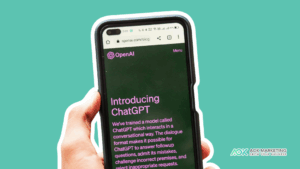Creating an effective ad can be a powerful tool to capture your audience’s attention, promote your brand, and drive conversions. Whether it’s for social media, search engines, or traditional media, the process of making an ad requires thoughtful planning and execution. In this guide, we’ll break down the process into clear, actionable steps to help you create a compelling ad that resonates with your target audience and achieves your marketing goals.

Step 1: Define Your Objective
Every successful ad campaign begins with a clear objective. What do you want your ad to achieve? Common advertising objectives include:
- Increasing brand awareness
- Generating leads
- Boosting website traffic
- Promoting a new product or service
- Driving sales or conversions
Being specific about your goal will guide the tone, content, and format of your ad. For example, an ad aimed at generating leads may need a different approach than one designed to promote brand awareness.
Tip:
Make sure your objective is measurable. Use specific numbers or percentages for success benchmarks, such as “increase website traffic by 15% in one month” or “generate 500 new leads.”
Step 2: Identify Your Target Audience
Understanding your audience is crucial for creating an ad that resonates. Start by developing a buyer persona—a detailed description of your ideal customer. Consider the following factors:
- Demographics: Age, gender, income level, education, etc.
- Psychographics: Interests, behaviors, values, and lifestyle choices.
- Pain points: What problems do they face, and how can your product or service solve them?
Your audience will dictate the tone, imagery, and platform for your ad. For instance, a playful, colorful ad might work better for a younger audience on Instagram, while a more professional, informative tone may resonate with an older audience on LinkedIn.
Tip:
Use tools like Google Analytics, social media insights, and surveys to gather detailed data about your target audience.
Step 3: Choose the Right Platform
Where you run your ad is just as important as the content itself. Different platforms attract different audiences and offer various formats for your ads. Here are a few popular advertising platforms:
- Social Media: Facebook, Instagram, Twitter, LinkedIn, and TikTok are ideal for reaching specific demographics.
- Search Engines: Google Ads and Bing Ads can target users who are actively searching for products or services like yours.
- Display Ads: These appear on websites, apps, and videos, usually in banner or pop-up formats.
- Video Ads: Platforms like YouTube allow for video ads before or during content.
Tip:
Choose a platform that aligns with your audience’s habits. For example, if your audience spends a lot of time on Instagram, focus on visually engaging content tailored for that platform.
Step 4: Craft a Compelling Message
Your message is the heart of your ad. It should be clear, concise, and compelling, addressing the following key questions:
- What are you offering?
- How does it benefit the audience?
- Why should they act now?
Focus on the unique selling proposition (USP)—what makes your product or service stand out from the competition. Highlight the benefits rather than just the features, and make the value to your audience crystal clear.
Example:
Instead of saying, “Our software has a user-friendly interface,” say, “Save time and boost productivity with our easy-to-use software.”
Step 5: Design Eye-Catching Visuals
The visual aspect of your ad plays a crucial role in grabbing attention. Whether it’s an image or video, it needs to be appealing, professional, and aligned with your brand identity. Here’s what to consider:
- Color scheme: Use brand colors for consistency, but make sure they contrast well for readability.
- Images: Use high-quality, relevant images or graphics that visually represent your message.
- Typography: Choose fonts that are easy to read and appropriate for the tone of your ad.
Tip:
Tools like Canva or Adobe Spark are excellent for creating professional-looking visuals, even if you don’t have a design background.
Step 6: Write a Strong Call-to-Action (CTA)
A call-to-action (CTA) is a crucial element of any ad—it tells your audience what to do next. Your CTA should be direct and action-oriented, such as:
- “Shop Now”
- “Sign Up Today”
- “Get Your Free Trial”
- “Learn More”
Ensure the CTA aligns with your ad’s objective. For instance, if you want to drive sales, use a CTA like “Buy Now.” If you’re generating leads, “Subscribe” or “Sign Up” may be more effective.
Tip:
Use words that create urgency or excitement, like “limited time offer” or “don’t miss out.”
Step 7: Set Your Budget
Your ad budget will determine how often your ad is shown, who sees it, and how long it runs. Most advertising platforms allow you to set a daily budget or a lifetime budget (the total amount you’re willing to spend during the ad’s duration).
You’ll also need to decide whether to use cost-per-click (CPC), cost-per-impression (CPM), or another pricing model. CPC charges you each time someone clicks your ad, while CPM charges you per thousand impressions.
Tip:
Start with a small budget and monitor the ad’s performance. You can increase your spend once you see which ads and targeting strategies are working best.
Step 8: Test Your Ad
Before launching a full-scale campaign, it’s essential to test your ad. This process, known as A/B testing, allows you to create different versions of your ad to see which performs better. Test variations of the following elements:
- Headlines: Does one headline generate more clicks than another?
- Images: Does a different image attract more engagement?
- CTA: Does “Sign Up Now” perform better than “Get Started Today”?
Running these tests will give you insights into what works and help you optimize your ad for maximum performance.
Tip:
Test one element at a time to isolate the variable that impacts performance.
Step 9: Launch and Monitor Your Ad
Once your ad is live, it’s essential to monitor its performance regularly. Most platforms provide detailed analytics to track metrics such as:
- Click-through rate (CTR): The percentage of people who click your ad after seeing it.
- Conversion rate: The percentage of people who take your desired action (purchase, sign-up, etc.).
- Cost-per-click (CPC): How much you’re paying for each click on your ad.
- Return on ad spend (ROAS): The revenue generated from your ad divided by the cost of the ad.
Analyzing these metrics will help you gauge the effectiveness of your ad and adjust as needed.
Tip:
If your ad isn’t performing well, experiment with different targeting options, adjust your budget, or tweak the ad copy and visuals.
Step 10: Optimize and Scale
Optimization is an ongoing process. As you gather data on your ad’s performance, continue to make adjustments to improve its effectiveness. This may involve:
- Refining your targeting
- Tweaking your messaging
- Adjusting your budget
- Changing your CTA or visuals
Once you’ve optimized your ad and it’s performing well, consider scaling your campaign. Increase your budget or expand your reach to new audiences to maximize results.
Tip:
Use automation tools like Facebook’s automated rules or Google Ads scripts to optimize your campaigns and save time.
Conclusion
Creating an ad that stands out and delivers results requires a combination of creativity, strategy, and continuous optimization. By following this step-by-step process—from defining your objectives and audience to launching, testing, and optimizing—you’ll be well on your way to crafting ads that not only catch attention but also drive meaningful business outcomes. Whether you’re a small business owner or a seasoned marketer, mastering these steps can set you up for advertising success.
About The Author
Khalid Essam
Khalid is the Chief of Staff at AOK. He collaborates with a team of specialists to develop and implement successful digital campaigns, ensuring strategic alignment and optimal results. With strong leadership skills and a passion for innovation, Khalid drives AOK’s success by staying ahead of industry trends and fostering strong client and team relationships.





